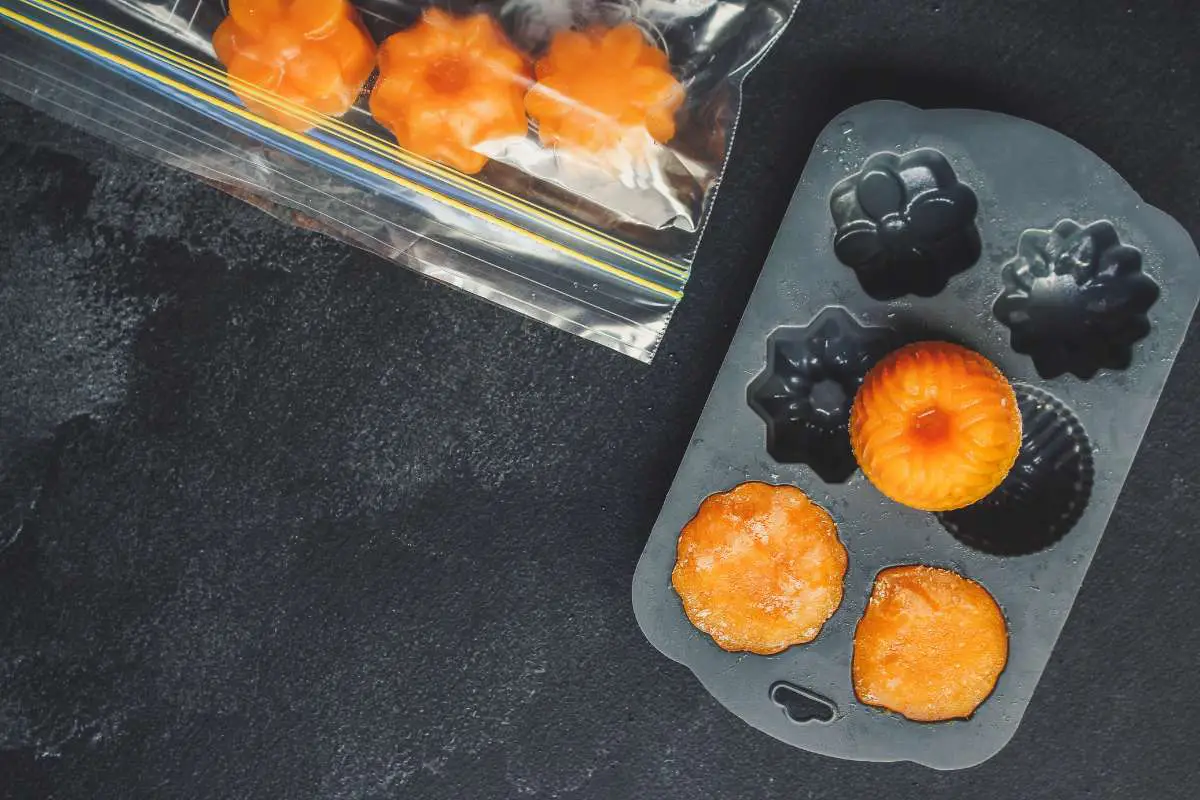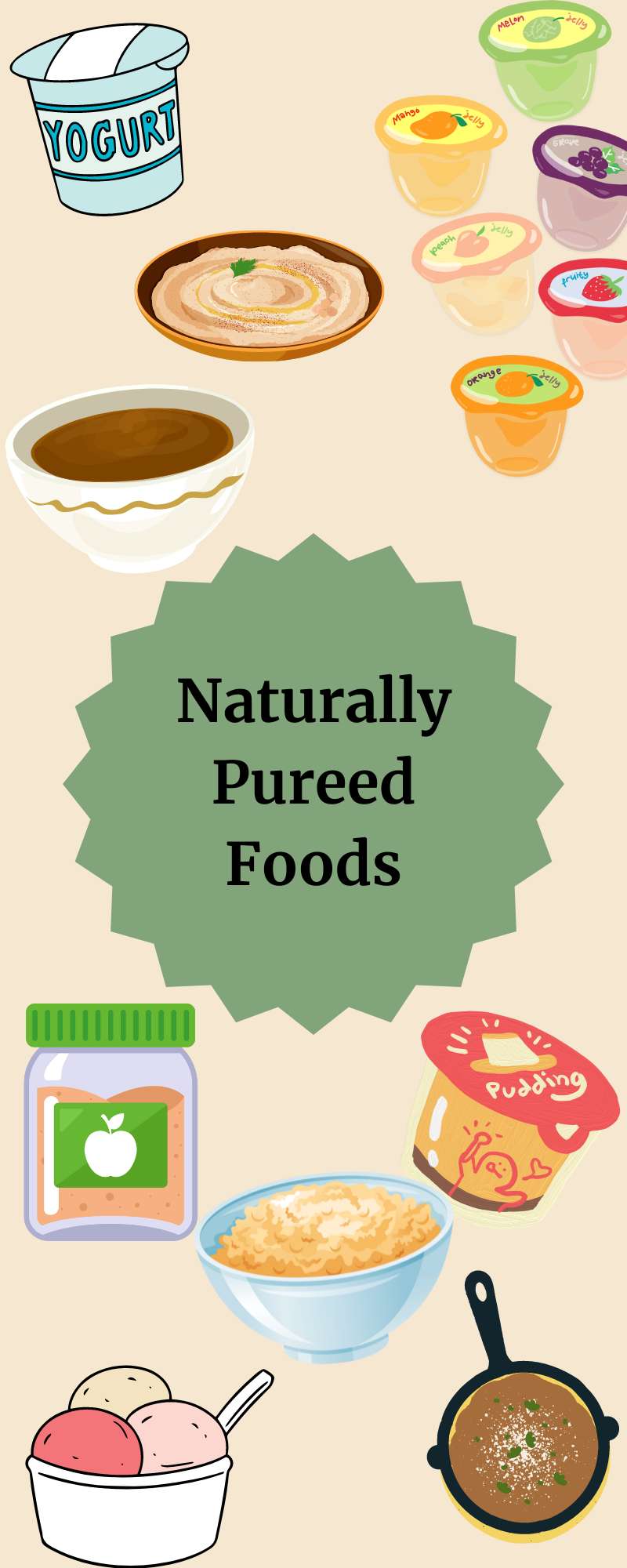Many older adults suffer from chewing and swallowing difficulty. Altering the texture of foods can make oral intake safer and easier. Let’s learn how to puree food.
*This article contains affiliate links. I may earn a commission from qualifying purchases at no extra cost to you.
What are pureed foods?
Pureed foods are foods that are blended to the consistency of pudding. They should be a smooth, even texture, without lumps or globs and are not sticky.
Who needs their food pureed?
Older adults are likely to have declines in their dentition. This sometimes results in tooth extractions. This can impact chewing ability.
Even with dentures, chewing may still be difficult. Softer foods may be enough to ease this, but some may need pureed food.
Many chronic conditions, especially neurological ones, can lead to difficulty swallowing (dysphagia).
Speech Language Pathologists may recommend a pureed diet, since it does not require chewing and is easier to swallow.
How to puree food
- Start with cut up cooked meats, vegetables, starches, desserts, or casseroles, or fresh or canned fruits.
- Add to a blender or food processor.
- Blend until smooth, without any lumps.
- If dry, add liquid during blending.
- If wet and runny, add more solids. Thickening powders can also be used.
- Shape using pureed food molds if desired (optional).
- Plate food and add condiments as you would regular texture foods.
Pureed bread mix can be used to make bread products by following the directions on the package.
What appliance do I need to puree food?
A blender may be all you need for pureeing foods. For tougher items, a food processor may be more efficient.
An individual blender can be great when only small servings are needed.
My personal favorite blender for all your pureeing needs can be bought right from Amazon. It has all the necessary attachments in this bundle.
*This article contains affiliate links. I may earn a commission from qualifying purchases at no extra cost to you.
What foods can be pureed?
Majority of foods can be pureed. If they are able to be blended into a smooth texture without lumps that aren’t sticky, then you have a puree.
Most meats, casseroles, cooked vegetables, cooked noodles, cakes, cookies, pies, canned fruits, and even some fresh fruits can be pureed.
Foods to Avoid
There are some foods that cannot achieve a smooth texture no matter how much they are blended.
Foods that have hulls, like corn, and stringy items, like pineapple, can be difficult to get a smooth, cohesive texture.
Raw vegetables, including salads and slaws, do not puree particularly well either due to their texture and water content.

Improving Flavor
Pureed food can taste good too. Season foods as you normally would during the cooking process.
Use milk, broth, gravy, or sauce when liquid is needed during pureeing. This provides extra flavor and nutritional value instead of using water.
Add the same condiments to pureed food items as you would if they were regular texture.
- Add tartar sauce and/or lemon to fish
- Top pureed beef with ketchup or barbecue sauce
- Use ranch or honey mustard with chicken
- Mix cranberry sauce into turkey or pork
- Add extra butter and seasoning to vegetables
- Try making pureed breads sweet with sugar and butter, even add cinnamon or chocolate
- Add cream cheese to bread mixtures
Improving Visual Appeal
How pureed foods look is a common barrier to appeal and consumption.
Many frequently feel they are eating the same foods over and over because they all look so similar.
There are pureed food molds that can be used to shape foods to look more like their “natural” shape. They come in a variety of shapes for various foods.

These molds can be purchased right from Amazon. Here are some of the shapes they offer:
They can be pricey because they are a specialty item, but may make the difference in your loved one eating puree or not.
Hormel also offers pre-pureed foods that are already shaped. They can ship frozen right from Amazon.
*This article contains affiliate links. I may earn a commission from qualifying purchases at no extra cost to you.
Naturally Pureed Foods
Incorporating naturally pureed foods into meals can also improve intake. Since they are not actually altered, people may be more willing to eat them.
Examples of naturally pureed foods include:
- Yogurt
- Pudding
- Applesauce
- Oatmeal
- Grits
- Cream of wheat
- Broth
- Smooth cream soup
- Jello
- Plain ice cream
- Refried beans
- Spam
- Hummus

Benefits of Pureed Foods
While pureed foods may not be as visually appealing or palatable, they do provide benefits for people with swallowing issues and/or poor dentition.
Pureed foods can provide a safe way for people with swallowing problems to still eat an oral diet. They can reduce the risk of choking and aspiration.
Some elderly with poor dentition or extreme weakness can become exhausted from chewing foods with more texture.
Pureed foods can actually increase intake for these individuals and help prevent malnourishment.
Practical Takeaways
Chewing and swallowing issues are common among the elderly. Pureed foods can help increase safety and nutritional intake.
Pureeing foods is not difficult, however there are strategies that can improve taste and appeal.



I am in the process of having teeth pulled and understand it may be up to a year before I am done and have at least dentures. Due to extreme pain I find I’m not eating well. 1. Thank you for your posts regarding pureed foods. I’ll be putting my Ninja to work. And 2. Should I consider incorporating supplement drinks/protein shakes? If so, are there any affordable, but still flavorful ones you’d recommend?
If you are not able to eat enough food then yes supplement drinks are a great option to add additional calories. I do have an article about nutritional supplements that you may find helpful.
Nutritional Drinks
The main thing is to find one you like that doesn’t break the bank. Store brand is just fine if you like the taste.